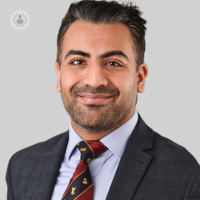When tongue-tie causes issues in my baby
Escrito por:Tongue-tie, medically known as ankyloglossia, is a condition which can be present at birth and can restrict the tongue's range of motion. This occurs when the lingual frenulum (the small band of tissue connecting the underside of the tongue to the floor of the mouth) is shorter or thicker than usual. While some babies experience little to no issues, others may face challenges that impact feeding, speech development and oral health.

What are the signs of tongue-tie in a baby?
Recognising tongue-tie early can help parents address any related problems. Common signs include:
- Feeding difficulties: Babies with tongue-tie may struggle to latch properly during breastfeeding, resulting in inadequate milk intake, poor weight gain and prolonged feeding times. Mothers may also experience pain during breastfeeding due to an improper latch.
- Restricted tongue movement: Difficulty sticking out the tongue past the lower gums, inability to lift the tongue to the upper teeth, or trouble moving it side-to-side.
- Clicking sounds while feeding: A sign that the baby is losing suction due to limited tongue movement.
- Frustration during feeding: Babies may become fussy, frequently pull away or seem unsatisfied after feeding.
How can tongue-tie affect my baby's development?
Feeding problems are the most immediate concern, as proper breastfeeding relies on an effective latch, which requires the tongue to move in a coordinated way. Babies with tongue-tie may tire quickly during feeds, potentially impacting their nutrition and growth.
Speech development may be affected as the child grows older. While many children with mild tongue-tie develop normal speech, those with more severe restrictions could experience difficulties pronouncing certain sounds that require tongue elevation (e.g., "t," "d," "l," "r," and "th").
Oral hygiene might also become an issue. Reduced tongue mobility can make it harder to sweep food debris from the teeth and gums, increasing the risk of tooth decay and gum problems as the child grows.
When should you seek treatment for tongue-tie?
If tongue-tie is causing significant feeding issues or other problems, discussing potential treatment options with a healthcare provider is important. In many cases, a paediatrician or lactation consultant will first assess the baby’s feeding patterns and oral anatomy.
What treatments are available for tongue-tie?
Frenotomy is a simple, quick procedure where the frenulum is snipped to free up the tongue's movement. It can be done in infancy without anaesthesia and typically results in minimal discomfort.
Frenuloplasty may be recommended for more complex cases or older children. This involves a more comprehensive release of the frenulum and may require stitches and local anaesthesia.
Will my baby recover quickly after treatment?
Babies generally recover well from a frenotomy, with most being able to breastfeed immediately after the procedure. Parents often notice improvements in feeding and latch quality almost immediately. For frenuloplasty, recovery may take a bit longer, but most children resume normal activities within a few days.
Are there any risks associated with tongue-tie treatment?
Both frenotomy and frenuloplasty are considered safe procedures, but as with any treatment, there are minimal risks such as bleeding, infection or scar tissue formation. Consulting with an experienced paediatrician, ENT specialist or paediatric dentist ensures the most appropriate care for your baby.
While tongue-tie can be concerning for parents, especially if it impacts feeding or development, it is manageable with proper assessment and timely intervention. Understanding the signs and knowing when to seek help can support better outcomes for both the baby and parents.


